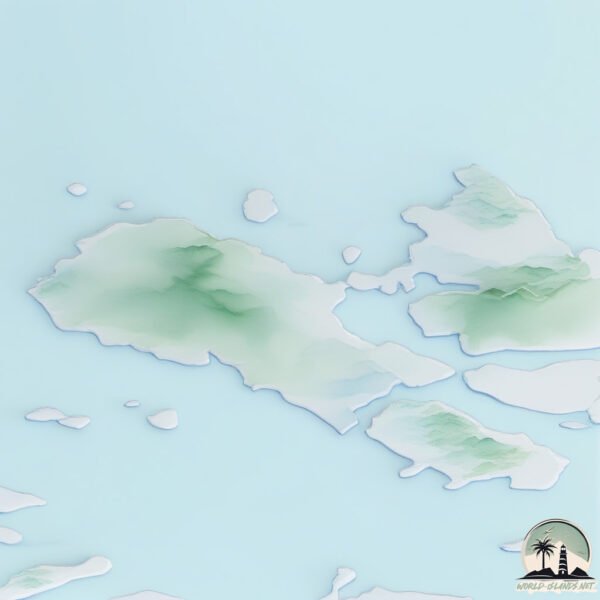Welcome to Gran Guaiteca , a Temperate island in the South Pacific Ocean, part of the majestic Pacific Ocean. This guide offers a comprehensive overview of what makes Gran Guaiteca unique – from its geography and climate to its population, infrastructure, and beyond. Dive into the details:
Geography and size of Gran Guaiteca
Size: 234.4 km²Coastline: 196.7 kmOcean: Pacific OceanSea: South Pacific OceanContinent: South America
Gran Guaiteca is a Large Island spanning 234 km² with a coastline of 197 km.
Archipel: –
Tectonic Plate: Burma – Also known as the Burma Plate, it’s a minor tectonic plate in Southeast Asia, largely covering Burma (Myanmar) and parts of the Indian Ocean. It’s involved in the subduction process under the Eurasian Plate, contributing to seismic activity in the region.
The geographic heart of the island is pinpointed at these coordinates:
Climate and weather of Gran Guaiteca
Climate Zone: TemperateClimate Details: Temperate Oceanic ClimateTemperature: Warm Summer
Climate Characteristics: Known for its moderate year-round temperatures with ample rainfall and no dry season. Warm summers are characteristic.
Topography and nature of Gran Guaiteca
Timezone: UTC-04:00Timezone places: America/La_PazMax. Elevation: 273 m Mean Elevation: 77 mVegetation: Evergreen Broadleaf ForestTree Coverage: 90%
The mean elevation is 77 m. The highest elevation on the island reaches approximately 273 meters above sea level. The island is characterized by Hills: Gently sloping landforms with rounded tops, having a maximum elevation between 200 and 500 meters. Hills contribute to a varied landscape on islands.
Dominating Vegetation: Evergreen Broadleaf Forest
Vegetation: 8 vegetation zones – Very Highly Diverse Island
Infrastructure and Travelling to Gran Guaiteca
Does the island have a public airport? no .
Does the island have a major port? no .
The mean population of Gran Guaiteca is 4 per km². Gran Guaiteca is Gently Populated. The island belongs to Chile .
Continuing your journey, Betecoi is the next notable island, situated merely km away.
Jessica, leñadora de Repollal y la Isla Gran Guaiteca. LQH, 2022.
Más contenido de #LugaresQueHablan en: ...
Las Guaitecas al fin del mundo #UPO #chile #nature #patagonia #island #isla
El archipiélago de las Guaitecas Nota 1 también conocido como islas ...
El archipiélago de las Guaitecas Nota 1 también conocido como islas Guaitecas, es un archipiélago situado en el océano ...
Guaitecas, lancha navegando por el archipiélago de las Guaitecas
Comuna de Guaitecas región de Aysén.
Comuna de Guaitecas región de Aysén.
Chile is classified as Emerging region: G20: Group of Twenty – Major economies comprising both developed and emerging countries, representing the world’s largest economies. The level of income is Upper middle income.
News – Latest Updates and Headlines from Gran Guaiteca
Stay informed with the most recent news and important headlines from Gran Guaiteca. Here’s a roundup of the latest developments.
Loading...
Please note: The data used here has been primarily extracted from satellite readings. Deviations from exact values may occur, particularly regarding the height of elevations and population density. Land area and coastline measurements refer to average values at mean high tide.

